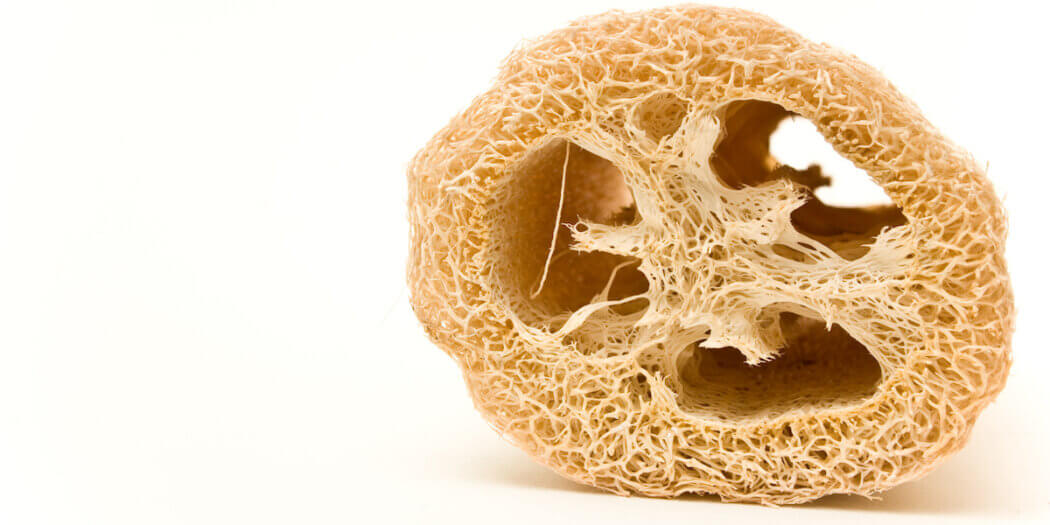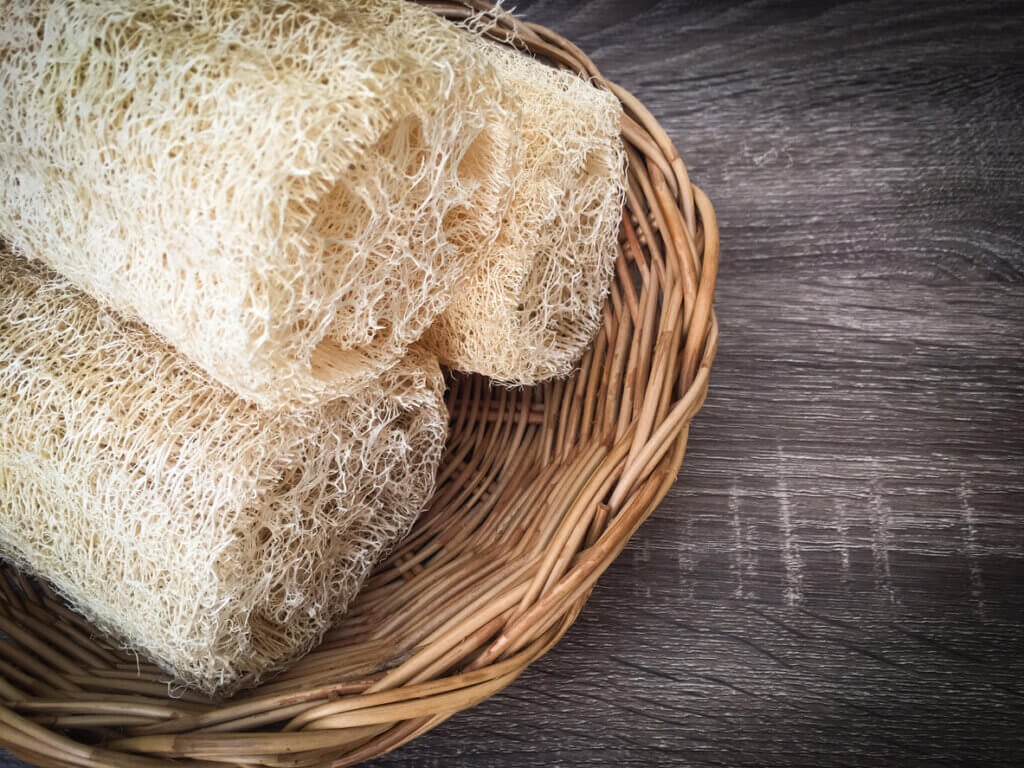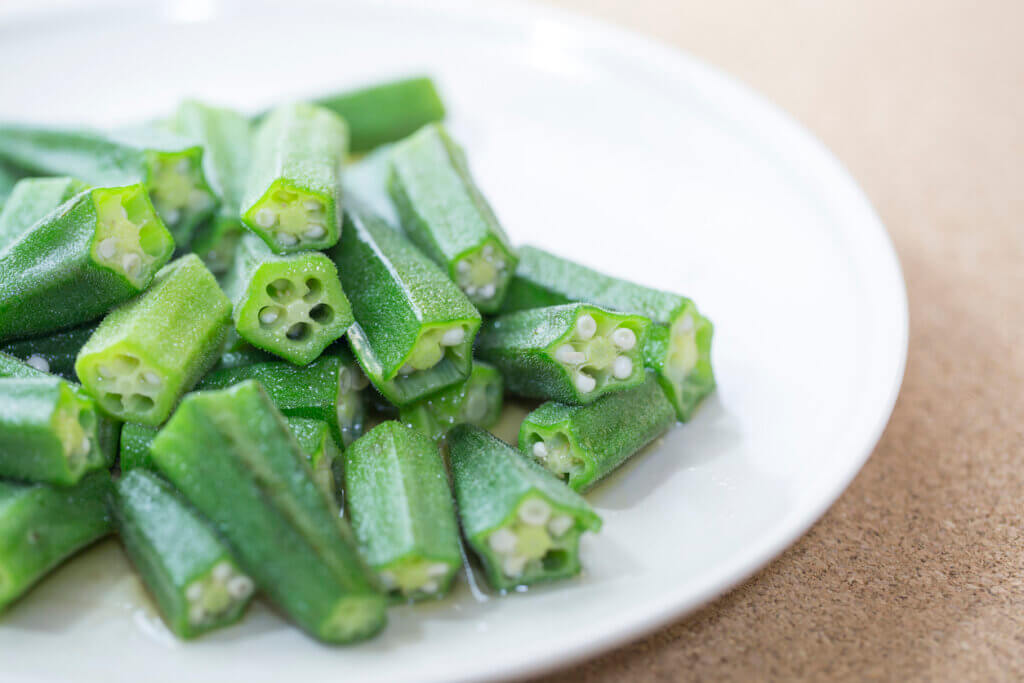Grocery Guides
Luffa: What Is It and Where Does It Come From?

What is luffa?
Did you know your dried luffa sponge (alternatively spelled “loofah”) hanging in the shower is actually a dried plant? Luffa, also referred to as a vegetable sponge, sponge gourd, or rag gourd, is a member of the climbing vines within the gourd species. Two species in particular (Luffa acutangular and L. aegyptiaca) are known for being strong vine climbers and have oblong-shaped fruits.
These fruits are green and edible when immature and turn into a beige color with a brittle exterior when mature. The insides of these luffa gourds have a sponge-like interior that is dried and used for bathing and washing. Edible luffa may be uncommon in the United States, but in Asian and Indian cultures, luffa is also referred to as Chinese okra.
Where did luffa originate from?
While the origin of the luffa plant is unknown, some believe it originated in India, Asia, or Africa and was brought to America centuries ago as one of the first domesticated crops. Most people in the US know luffa as a bath sponge, however, in Asia and certain parts of Africa, luffa is part of cultural cuisine.
How is luffa grown?
Luffa plants need a long growing season and are sensitive to the cold. Because of this, luffa grows best in the summer and matures into the autumn season. Luffa plants require ample amounts of sunshine, water, and well-drained soil. When grown under the proper conditions, the vines of the luffa plant can grow up to 30 feet in length and can attach themselves and climb onto structures as high as 15 feet. The luffa vines produce twisting tendrils, yellow flowers, and gourd fruits.
When young, the fruit of the luffa plant is green, but as it matures, the fruit lightens in color and begins to lose water weight. The outer shell begins to harden, and the interior fibers start to separate from the shell. Do not wait too long to harvest your luffa; otherwise, the outer rind may over-harden and make it difficult to peel. If harvesting takes too long, decay and dark spots may also occur due to the fruit becoming over-ripe. Typically, when the luffa becomes dry and hardens, it is used to create the organic bath sponges you see in stores.

When is luffa in season?
The intended purpose of the plant changes when it needs to be harvested.
If you want to eat it, the luffa is typically eaten when it is young and tender. For consumption purposes, luffa is eaten when green and is often compared to being softer than a cucumber and crisper than a zucchini in texture.
If you want mature luffa, it is best harvested during the autumn season. The luffa plant matures slowly throughout the summer, and the fruits typically ripen during autumn before they are harvested. If you want to pick luffa seeds, do so during the autumn season. Do not wait too long to harvest your luffa, as cold temperatures will destroy the vines.
If you want to make loofah gourds into sponges, you’ll have to grow them yourself. Let the fruits mature on the vine until their skin turns from green to brown or yellowish-brown and the gourd itself feels light when lifted in your hand.
How do you choose luffa at the grocery store?
If you are looking for edible luffa, check the vegetable aisle in specialty grocery stores. You may have better luck finding luffa at Asian or Indian specialty supermarkets. Look for luffa deep green in color and has firm outer skin.
When immature, luffa should be heavy. As luffa matures, it begins to lose water weight and changes in color. If the luffa feels light in weight and is lighter in color, opt for a different luffa. Make sure there are no dark spots or signs of decay.

How to store luffa
One way to store luffa is in the refrigerator. You can keep the luffa whole and store it in the fridge wrapped in paper towels or in an airtight container. You can also cut your luffa into pieces and store it. It is best to wash and peel your luffa before cutting it into pieces, so it stays fresher for a longer period of time.
Luffa is best eaten immediately or within a few days. It is recommended that if your luffa is in the fridge for more than three to four days, you should wash it, as bacteria could form.
How to tell if luffa is bad
There are a few ways to tell if your luffa has started to go bad. Immature and edible luffa is dark green in color. When luffa starts to age, it changes in color and weight. As the luffa matures, it loses water weight and feels lighter. The dark green skin also lightens in color, changing from green to yellow to a light beige.
You can tell if your luffa is starting to go bad based on the outer texture. When fresh and edible, the skin is firm and crisp, however, the texture becomes rough and brittle when the luffa starts to mature and spoil.
Luffa substitutes
Although it is a member of the gourd family, luffa is often compared to cucumbers and zucchinis. You can try substituting cucumbers and zucchinis for luffa, but the texture and taste will vary. Since the luffa is technically a gourd, you can also try using other gourd species, like squash and pumpkin, as substitutions for luffa.
Shop for luffa
Because it’s an unusual item in the US, luffa may be challenging to find in stores. To save time and effort, search for luffa near you via Instacart. Just add it to your cart and choose same-day delivery or pick up at checkout. Nourish your body inside and out and let Instacart deliver your new favorite vegetable directly to your home, hotel, vacation rental, or Airbnb.
Most Recent in Grocery Guides

Grocery Guides
15 Tasty Ice Cream Alternatives: Yogurt, Shaved Ice & More
Ice cream has been a beloved treat for generations. With its rich flavors and smooth texture, it’s no wonder people choose ice cream when looking for dessert. However, as dietary restrictions and health consciousness evolve,…...
Apr 10, 2024![When Is Artichoke Season? [Recipes + Guide]](https://www.instacart.com/company/wp-content/uploads/2024/03/when-is-artichoke-season-hero-447x224.webp)
Grocery Guides
When Is Artichoke Season? [Recipes + Guide]
Quick Answer When is artichoke season? In North America, artichoke season is from March to May, with smaller batches in October. Artichokes are a unique and versatile vegetable known for its tender heart and delicate…...
Mar 6, 2024
Grocery Guides
Brown Eggs vs. White Eggs: How Are They Different?
Eggs are an essential ingredient in many sweet and savory recipes. The possibilities are endless when it comes to using these protein-packed powerhouses — you can scramble, fry, boil or poach eggs, or you can…...
Feb 24, 2024

 Squash – All You Need to Know | Instacart Guide to Fresh Produce
Squash – All You Need to Know | Instacart Guide to Fresh Produce  Ghost Pepper – All You Need to Know | Instacart Guide to Fresh Produce
Ghost Pepper – All You Need to Know | Instacart Guide to Fresh Produce  Sprouts – All You Need to Know | Instacart Guide to Fresh Produce
Sprouts – All You Need to Know | Instacart Guide to Fresh Produce 

